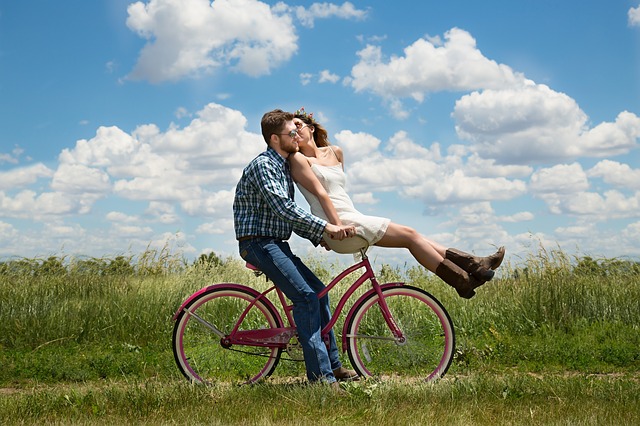Imagine you are a bicycle, wheels, frame and all. Now you need to travel from A to B. The points A and B can be many things. A could be unfit, B could be fit. A could be overweight or obese, and B could be trim and athletic.
A could be birth, B could be death (hopefully these two are a suitable distance apart).
What will happen to your bicycle if there is a buckle in the wheel? How far will you get? What are all the possibilities?
1.The wheel could get worse
2.The bike won’t travel in a straight line
3.The journey is more difficult
4.If you kept riding the frame may become permanently damaged
5.You can’t travel at the pace, speed and efficiency that you want
6.It all becomes too hard, too painful and mending the bike becomes too expensive
7.You give up
This is why generic one-size-fits-all “I got it out of the back of a magazine” fitness programs can hinder our progress towards our fitness goals, whatever those goals may be.
When you have decided on your journey—weight loss, training for an event etc.—the gym based aspects of that program should be focused on balancing the body structurally.
The trouble is everybody wants results now! They’ve made the decision to join a gym or get fit, lose weight and they want results. But unless we address the foundations first those results maybe very short lived.
Tips To Achieve Balance
- Your first three programs should all be unilateral i.e. dumbbell exercises for the upper body and single leg exercises for the lower body. No squats, no deadlifts and no barbells.
- Which is your weaker side? Exercise this side first. Only do the same number of reps on your strong side as you could do on your weaker side. If keep going on your stronger side, you are just maintaining the imbalances in your body or making them worse.
Your upper body exercises should all be using dumbbells, you can do these bilaterally i.e. both arms moving at the same time but you stop when the weakest limb fatigues.
- There should be a heavy focus on flexibility. You need to stretch everyday. Most of us, when we do remember to stretch, do an all over body routine and stretch both sides.
Remember, we are trying to correct imbalances. Work out which side is tighter and stretch that more.
- Note that it is structurally sounder to not have a full range of motion but be balanced rather than stretching both sides of your legs and still having one 30 degrees tighter than the other.
For most people in this day and age special attention needs to be paid to the posterior chain, Hamstrings, Glutes and Piriformis.
- Pay attention to the muscles around the hips and the shoulder. If the muscles around the hips are out of balance it can lead to lower back problems.
If you don’t pay attention to the rotator cuff muscles in the shoulder it can lead to chronic shoulder problems when you are further down the track.
- Lastly you must work the forearms—I hardly ever see anybody doing forearm work , especially girls.
If you don’t exercise these important muscles, when you start doing assisted chin ups and pull ups etc it can quickly lead to golfers and tennis elbow which has cut many an exercise program short.
Examples Of Some Typical Structural Balance Exercises
•Lower Body – Side step, split squat, single leg hamstring curl
•Upper Body – Neutral grip Dumbbell Press, Trap 3 raise, Seated External rotation from the knee, single arm row
•Core – Swiss ball degree Isometric hold, Ab Roll out (using Ab wheels or a barbell)
Conclusion
I know some of you out there have an aversion to gyms but these exercises and getting this kind of body balance is best done in a gym environment. Three months in the gym focusing on balance and flexibility may save you a fortune in physio bills later.
They will also help long term with you achieving your goals with efficiency and make the process more enjoyable.
A full assessment with a personal trainer or strength and conditioning coach, will arm you with all the knowledge you need. They will be able to help you answer, what the correct degrees of flexibility per limb are? What are the strength ratios per limb etc.
An assessment takes roughly 1–1.5 hours and is well worth it.
Unfortunately there are a lot of trainers out there who will just jump you onto a weight loss program or a hypertrophy program without testing what your weaknesses are and this will just exacerbate your weaknesses, with a good chance that you will end up being sidelined with injury, get demotivated and end up losing sight of your goal.
Seek out a personal trainer who is qualified to do a full body assessment, the two qualifications that spring to mind are either Boutagy Institute qualified or Poliquin qualified but this depends on where you are in the world.
I’m sure in other countries there are other qualification providers…. the keywords when inquiring are structural or muscular balance.
I hope this helps. If you’d like more information or found this interesting, please leave a comment. If you’d like to book an assessment, please contact us.
You can find much more information on living a holistic lifestyle in these free magazines and on our YouTube channel.
Joe Bonington






